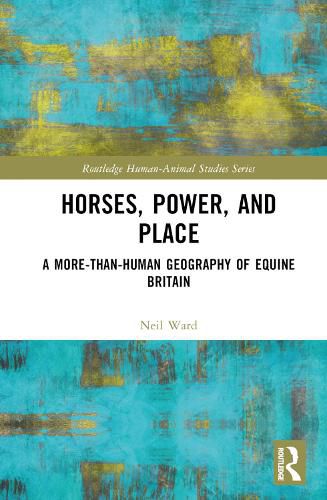Readings Newsletter
Become a Readings Member to make your shopping experience even easier.
Sign in or sign up for free!
You’re not far away from qualifying for FREE standard shipping within Australia
You’ve qualified for FREE standard shipping within Australia
The cart is loading…






Horses, Power and Place explores the evolution of humanity's relationship with horses, from early domestication through to the use of the horse as a draught animal, an agricultural, industrial and military asset, and an animal of sport and leisure.
Taking an historical approach, and using Britain as a case study, this is the first book-length exploration of the horse in the more-than-human geography of a nation. It traces the role and implications of horse-based mobility for the evolution of settlement structure, urban morphology and the rural landscape. It maps the growth and various uses of horses to the point of 'peak horse' in the early twentieth century before considering the contemporary place of the horse in twenty-first century economy and society. It assesses the role of the horse in the formation of places within Britain and in the formation of the nation. The book reflects on the implications of this historical and contemporary equine geography for animal geographies and animal studies. It argues for the study of animals in general in how places are made, not just by humans.
Written in a clear and accessible style, this book will be essential reading for students and scholars of animal geography and animal studies more widely.
$9.00 standard shipping within Australia
FREE standard shipping within Australia for orders over $100.00
Express & International shipping calculated at checkout
Horses, Power and Place explores the evolution of humanity's relationship with horses, from early domestication through to the use of the horse as a draught animal, an agricultural, industrial and military asset, and an animal of sport and leisure.
Taking an historical approach, and using Britain as a case study, this is the first book-length exploration of the horse in the more-than-human geography of a nation. It traces the role and implications of horse-based mobility for the evolution of settlement structure, urban morphology and the rural landscape. It maps the growth and various uses of horses to the point of 'peak horse' in the early twentieth century before considering the contemporary place of the horse in twenty-first century economy and society. It assesses the role of the horse in the formation of places within Britain and in the formation of the nation. The book reflects on the implications of this historical and contemporary equine geography for animal geographies and animal studies. It argues for the study of animals in general in how places are made, not just by humans.
Written in a clear and accessible style, this book will be essential reading for students and scholars of animal geography and animal studies more widely.